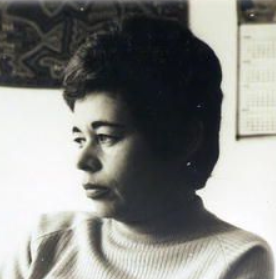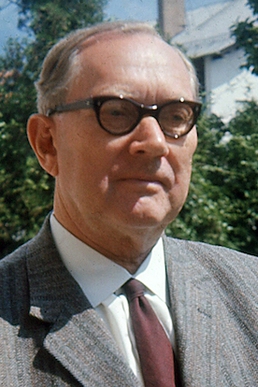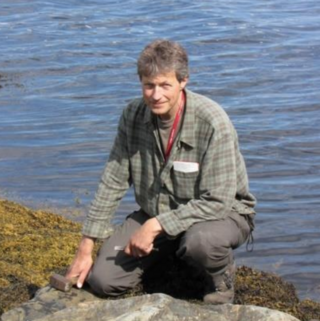Related Research Articles

Lichenology is the branch of mycology that studies the lichens, symbiotic organisms made up of an intimate symbiotic association of a microscopic alga with a filamentous fungus. Lichens are chiefly characterized by this symbiosis.
David Leslie Hawksworth is a British mycologist and lichenologist currently with a professorship in the Universidad Complutense de Madrid in Madrid, Spain and also a Scientific Associate of The Natural History Museum in London. In 2002, he was honoured with an Acharius Medal by the International Association for Lichenology. He married Patricia Wiltshire, a leading forensic ecologist and palynologist in 2009. As of 2022, he is the Editor-in-Chief of the journals IMA Fungus and Biodiversity and Conservation.
Hildur Krog was a Norwegian botanist.
André Aptroot is a Dutch mycologist and lichenologist.

Margalith Galun was an Israeli lichenologist. She was a member of the Israel Academy of Sciences and Humanities and established the Israeli collection of lichens at Tel Aviv University. Founder of the academic journal Symbiosis, she served as its editor-in-chief between 1985 and 2006. In 1994, she was awarded the Acharius Medal and in 1996 won the Meitner-Humboldt Prize, for her contributions to the field. The International Association for Lichenology grants an award which bears her name to honor scholarship at their quadrennial symposium.
Rolf Santesson (1916–2013) was a Swedish lichenologist and university lecturer. He was awarded the Acharius Medal in 1992 for his lifetime contributions to lichenology.
Peter Wilfred James (1930–2014) was an English botanist and lichenologist. He was a pioneer in the study of lichens as environmental indicators, especially of atmospheric pollution.

David John Galloway, FRSNZ was a biochemist, botanist, and lichenologist.
Per Magnus Jørgensen is a Norwegian botanist and lichenologist, and Professor Emeritus of systematic botany at the University of Bergen. He is known for his work on the lichen families Pannariaceae and Collemataceae. Jørgensen was awarded the Acharius Medal in 2021 for his lifetime contributions to lichenology.
Brian John Coppins is a botanist and lichenologist, considered a world authority on crustose lichens and a leading expert on the genus Micarea.
Marie-Agnès Letrouit-Galinou is a French botanist, mycologist, and lichenologist, known for her contribution to revolutionizing the scientific understanding of ascomycete development and classification.
Peter Crittenden is a British lichenologist. His research largely concerns the ecophysiology of lichens. Crittenden is known for using new techniques to study lichens, such as the use of 3D printing and X-ray computed tomography to study lichen structure and development. He served as the senior editor of the scientific journal The Lichenologist from the years 2000–2016; and still serves on the editorial board for the journal Fungal Ecology. Crittenden was the president of the British Lichen Society in 1998–1999, and president of the International Association for Lichenology from 2008 to 2012. He was awarded the Acharius Medal at the 10th International Mycological Congress in Bangkok in 2014, for his lifetime achievements in lichenology.

Gunnar Bror Fritiof Degelius was a Swedish lichenologist. Between the publications of his first and final scientific papers, Degelius had a 70-year-long research career. While he was best known for his expertise on the lichen genus Collema, he also wrote important papers on lichen biology and ecology, floristic studies of the Nordic countries and various other areas around the world, and lichen succession. Degelius described 124 new taxa, and published about 130 scientific papers. In 1992 he was one of the first to be awarded the Acharius Medal for his lifetime contributions to lichenology. Fifteen species and three genera have been named in honour of Degelius.
Henricus (Harrie) Johannes Maria Sipman is a Dutch lichenologist. He specialises in tropical and subtropical lichens, and has authored or co-authored more than 250 scientific publications. He was the curator of the lichen herbarium at the Berlin Botanical Garden and Botanical Museum from 1983 until his retirement in 2010.
The Lichenologist is a peer-reviewed scientific journal specializing in lichenology. It is published bimonthly by the British Lichen Society. According to the Journal Citation Reports, the 2020 impact factor of The Lichenologist is 1.514, ranking it 149 out of 235 in plant sciences and 26 of 29 in mycology.
Mark Richard David Seaward is a British ecologist and lichenologist. He was awarded the Acharius Medal in 2006 for lifetime contributions to lichenology.
Alexandra "Sandy" M. Coppins is a Scottish lichenologist. She was president of the British Lichen Society from 2002 to 2004.
Thomas Douglas (Dougal) Victor Swinscow (1917–1992) was the founder of the British Lichen Society and the scientific journal The Lichenologist. He was also a member of the editorial team of the British Medical Journal and deputy editor from 1964 until 1977.
Oliver Gilbert was an urban ecologist and lichenologist. He was a reader in landscape ecology at Sheffield University. He was one of the early users of lichens as indicators of air pollution, and also studied the ecology and diversity of wildlife in urban areas.

Alan Orange was a British lichenologist. His research interests included lichen taxonomy and phylogenetics, aquatic lichens, and the family Verrucariaceae.
References
- ↑ "The British Lichen Society" (PDF). Nature. 181 (4609): 602. 1958. doi:10.1038/181602c0 . Retrieved 24 August 2022.
- ↑ "British Lichen Society". Charity Commission for England and Wales. Retrieved 24 August 2022.
- 1 2 3 Hawksworth, D.L.; Seaward, M.R.D. (1977). Lichenology in the British Isles, 1568–1975: An Historical and Biographical Survey. Richmond: The Richmond Publishing Company. pp. 35–38.
- ↑ James, P.W. (1986). "Ursula Katherine Duncan". The Lichenologist. 18 (4): 383–385. doi: 10.1017/s0024282986000579 . S2CID 85100132.
- ↑ Moxham, T.H. (1983). "British Lichen Society Silver Jubilee Celebrations". The Lichenologist. 15 (3): 289–296. doi:10.1017/s0024282983000420. S2CID 84576162.
- ↑ Dirig, Robert (2006). "Reviews: Birth of the British Lichen Society". The Bryologist. 109 (2): 296–298. doi:10.1639/0007-2745(2006)109[296:rbotbl]2.0.co;2. S2CID 85880250.
- ↑ "The Lichenologist". Cambridge University Press. Retrieved 24 August 2022.
- ↑ Smith, Redmond (1992). "Obituary: Dr Douglas Swinscow". The Independent. Retrieved 22 November 2022.
- ↑ Marren, Peter (30 March 2014). "Obituary. Peter James: Lichenologist who was one of the first to establish the study of these primitive plants as a scientific speciality" . The Independent. Archived from the original on 26 May 2022.
- ↑ Crittenden, Peter (2016). "Change of Managing Editor". The Lichenologist. 48 (1): 1–2. doi: 10.1017/S0024282915000468 .
- ↑ Purvis, Ole William (2005). "A tribute to Oliver Lathe Gilbert". The Lichenologist. 37 (6): 467–475. doi: 10.1017/S0024282905900042 . S2CID 85081992.
- ↑ "BLS Officers". The British Lichen Society. Retrieved 19 November 2022.